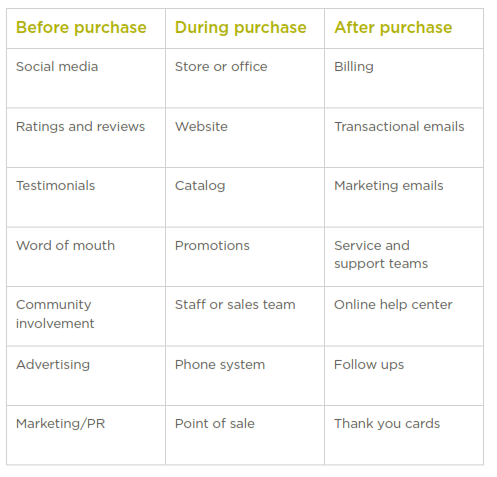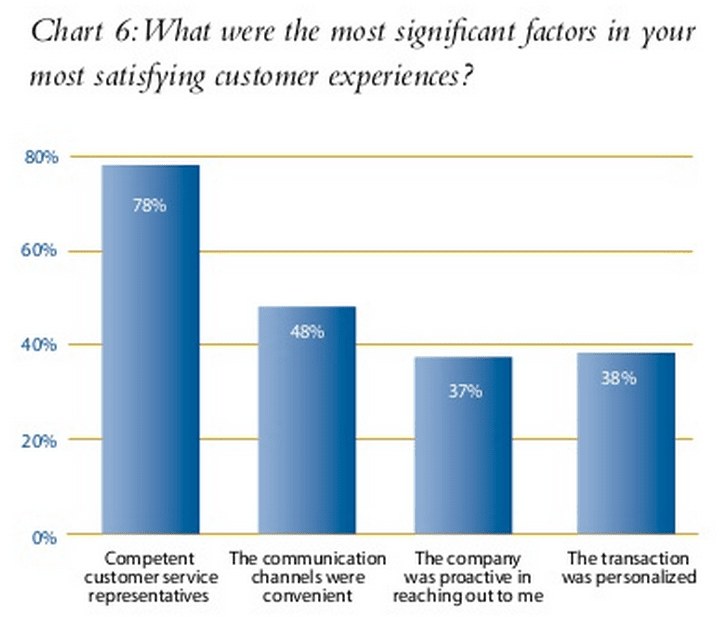If you want to keep customers loyal, you need to be there when something goes wrong. But as a business grows, consistently providing top-notch customer service can be difficult and expensive. While nothing beats good support from an actual human, using content strategically can make it a lot easier to scale your efforts—and focus more resources in other areas.
Engage customers with fresh content
Netflix, Cosmopolitan, and Business Insider are using SurveyMonkey Audience to create viral, engaging content.
But how do you identify the right issues to address? How do you get that content to customers when they need it? And how should you craft your content to make sure it really helps? A study by Geneysis found that 65% of customers have ended relationships due to poor customer service. Indeed, stakes are high when you try to replace or augment the human call centers people prefer:

You have to walk a fine line to use content to bolster your customer service efforts. We talked to seven online content experts to outline a simple process for making sure your support content keeps your customers happy while you keep an eye on the bottom line. And here’s what they said.
Step 1: Show customers the ropes
Setting the right expectations from the outset is key. When you market your product or service, you make a lot of promises to your customer–and you need to deliver. If you overpromise and underdeliver, you’ll wind up with issues no customer support team can fix. But you can also run into problems if customers simply have a hard getting up to speed or using your product the way it’s intended.
“Our internal research has shown that the biggest predictor of customer happiness happens before the customer even meets the customer support person,” says Larry Kim, Founder and CTO of Wordstream, an online advertising startup. “A key to scaling customer support is simply to avoid relationship-killing client onboarding mistakes that you’ll never recover from.
An easy fix? Give customers an orientation, detailed user guide, or product walkthrough when they first get started with you. This extra step will give you an opportunity to get in front of common problems, but it will also help customers understand (and take advantage of) all the benefits they’ll get from their relationship with you.
Step 2: Keep tabs on support issues
It all starts with your support team, according to Zeph Snapp, CEO and Founder Altura Interactive, a Spanish language digital marketing firm.
We use customer service queries to inform the content calendar. When some people are describing a problem or frustration, there are probably others doing the same on search engines. We want to make sure we head these queries off at the pass. That way we can control the conversation, instead of getting a negative review.
Support teams typically keep a log of issues they deal with. These logs often influence product enhancements and messaging, but your content should also reflect what you learn. From publishing FAQs to knowing what needs to go in your onboarding guide, your support team knows what customers want. Identifying and addressing common issues is the perfect place to start.
Step 3: Give customers a voice
You also need to be able to identify and anticipate potential issues. Soliciting customer feedback is a smart way to let customers tell you what they’re experiencing says Tommy Walker, Head Editor of the ConversionXL blog. He recommends, “Building feedback loops to gather insights at every point in your customer lifecycle.”
Sounds simple in theory, but the customer journey map is dotted with potential touchpoints. Step into your customers’ shoes and walk through your businesses customer lifecycle to understand all the ways they may be interacting or looking for help from you:

Emailing feedback or customer satisfaction surveys to your customers on regular intervals, or at important points in the customer lifecycle (like when they purchase, leave, or renew), is a simple way to get your feedback loop off the ground. Having a static “How are we doing?” link on your website is another way to make sure customers have a chance to tell you want they think.
But you also need to be on the lookout for feedback.
“Listen. Find as many ways to listen as possible,” Walker recommends. “Have phone conversations, do instant messages, use on-page surveys, do surveys every quarter, ask for net promoter scores. Make your job about listening and sorting the data, then create content.”
And don’t forget to keep an eye out for complaints and feedback on social media.
Step 4: Look to the data
Another key way to identify and anticipate customer service issues is by looking into your data for places where customers appear to be struggling. Depending on the type of issue, you can look for high exit rates, extremely long or short time on page, or decreased usage beyond a certain point in an app:

Maybe these kinds of issues are too small for customers to complain about. Or maybe customers can’t find a good way to get help. Matt Gratt, Sr. Marketing Manager at BuzzStream, talked about how powerful this approach to developing content can be:
We found that some of our new customers had trouble with a feature and abandoned their trial, so we created help materials around that feature. Not only did this increase trial activation and reduce churn, but non-customers found the best practices valuable enough to share.
Step 5: Connect with your customers
When customers encounter a problem, it can be incredibly disruptive to their day. Getting them back on track certainly means getting them the right information. Your content also needs to speak to aggrieved customers the right way, according to Nathalie Nahai (also known as The Web Psychologist), the best-selling author of Webs Of Influence:
When someone comes to you in a heightened state emotionally—whether they’re upset or frustrated—they’re directing a lot of emotional tension toward you. One of the most crucial ways to offer support is to establish a sense of rapport. If you establish rapport, you’re much more likely to a) understand what they want, b) empathize with them, and c) get them to a resolution that will satisfy everyone.
If you have a number of customers with a similar issue and want to address it with content, use the language that other customers in their situation have fed back to you, make it clear you understand what they’ve gone through, and provide a solution.
Nahai also notes that improving your customer service content can do a lot more than keep customers from leaving. “Research has found that when people are angry, they can often turn into the best advocates because they have so much energy,” she adds.
Step 6: Keep help convenient and relevant
When creating content for customer support, you also want to deliver it in the right place and the right time. If you’re not careful, that “Help” link can become a rabbit hole of inapplicable information.
Automated approaches can make things easy, says Laura Carper, Marketing & Technology Coordinator at RE/MAX Alliance, but providing awesome service takes more than setting up a help center. “It’s always important to try and target your audience,” she says. “So find a system that allows your consumer to choose what experiences they want to receive, rather than just sending everyone [to the same place].”
Make your help content discoverable. And when possible, link directly to the content that’s most likely to solve someone’s problems (rather than a top-level help or FAQ page). If all your customer service content is on one page, use anchor links, or create a clear system of organization to help customers find what they’re looking for.
These ideas are reinforced by the Genesys customer experience study. While interactions with a rep are often critical, convenient and personalized help are also important issues:

Step 7: Give visitors something actionable to do
So you’ve anticipated your customers’ biggest issues. You’ve made it easy for them to find helpful content. Now what?
Your customer is likely to be asking the same question.
“For each content piece that we publish, we make sure to provide a call to action at the end so customers have a place to go or something to do after reading,” says Joseph Lei, Product Manager at online legal service RocketLawyer. Giving a CTA (or some other kind of concrete next step) should make it easy for customers to get back into their groove.
You can also use this moment of resolution to get feedback—or give customers a chance to thank you publicly with social sharing buttons.
Even the best content may not resolve every problem, though. To make sure frustrated customers still have an avenue to get help, make sure you still give them a reasonable way to access to your customer support team.





